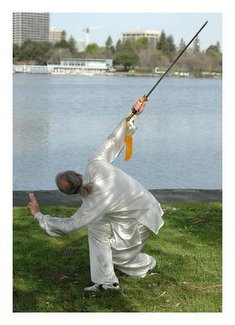I trust everyone here realizes that I have a glorious love of language. I enjoy wrapping my tongue around the well-turned phrase, the simplistic elegance of a straightforward homily, or a gem of a quote that opens the door in the mansion of the mind.
A recent blogversation prompted something that’s been turning over in my skull for quite a while.
A recent post here (just a snippet):
In my post on morality, I said “I found the flavor wholly repulsive, and turned my face away from that innate darkness that humans have built into their nature. With no help from religion, I might add.”
To wit, the response on the other blog went as follows:
“These statements sound an awful lot like the doctrine of original sin. Yet, while recognizing the “innate darkness” humans have, they venomously deny original sin. Secondly, if humans have “darkness built into their nature”, what makes that darkness wrong?”
Now, it’s not his fault that he drew more out of my words than what was meant. Allegory tends to dent the dialogue: one searches for excess meaning, when sometimes, as Freud put it: “Sometimes a cigar is just a cigar.”
And then I remembered this gem:
“Anthropomorphism? You mean like, “Mother Nature”, which is a term more often on the lips of macroevolutionists than intelligent design supporters.”
Double take, and say what?
And it put me in mind of a correspondence with Michael (aka ‘HairlessMonkeyDK’), where I sent him the synopsis of my novel, which described a Christian captain of a whaling ship embarking on a mission to rescue his niece and nephews from an evil creature. To wit, he responded that it seemed, well, antithetical to my current belief/non-belief system. I recall (doing this from memory), going into this knee-jerk, long, involved explanation about the hows and whys and whatnot (how it was written in my pre-atheist days, etc.). That night, I went to bed, and realized: WTF? Why did I even need that long drawn-out explanation/set of excuses?
Short version: I don’t. So I sent him off another email, next day, rescinding all of it. I of course, was polite about it.
And so we come to the crux of the matter:
I will use any bloody turn of phrase I bloody well please, thanks much. Because:
- It’s called the First Amendment, and
- No one has a lock on specific phrases, quotations, citing of literature, etc.
I tire of asking, “Can I still use saint/demon/angel/soul (or any other word with religious significance)?” Can I say ‘Bless you?’ without being censured? Can I blaspheme freely, without someone claiming I’m lending credence and value to something I speak against?
Well, goddammit, I’m going to do so, whether I receive approval or not.
For instance: I understand that Harlan Ellison (a writer of such magnitude of power and grace, I am unworthy to tie his shoelaces) is an atheist. Yet he wrote some stories with religious undertones (or overtones, contingent on the title we’re talking about), without apology. Asimov (another writer whom I esteem, who is quoted as saying that the bible is the single best argument for atheism) was also an atheist, yet he wrote Azrael, a collection of stories about a man with a demonic sidekick.
So the short version: I’m a little sick of this PC crap, that stipulates what I can and cannot say. Henceforth, I will refrain from phrases like, “It touched my soul” (as I am fairly positive there’s no such thing). But if I refer to ‘that innate darkness’, or use a comment like ‘wrestling with his/her/my/their demons’, and you think this is some sort of nod or validation of the other side, well, you’re SOL.
So here it is: I’m giving myself a free pass. That’s right: I’m gonna use whatever colors are on the palette to paint my picture on the blank page. Since the English language is public domain, I will borrow as I please, select phrases that evoke a specific image, to make a point, or draw on the canvas.
Because there’s no copyright, trademark, or exclusive rights to any well-turned evocative imagery, phrase, concept, or sentence that’s in the public domain.
As Phillip K. Dick (another marvelous author) once said: “The basic tool for the manipulation of reality is the manipulation of words. If you can control the meaning of words, you can control the people who must use the words.”
And let’s face it, folks: letting them get away with a corner on the market in matters of speech, is giving them control over how we speak. Whether the control is microcosmic or macrocosmic, it’s still control. Something the religious have had for far too long.
Herein, then, is my formal declaration: I snap the leash, I snap at the hand that holds it. I will not be censored, or censured in this manner.
Anyone want a cigar? No?
Till the next post, then.












